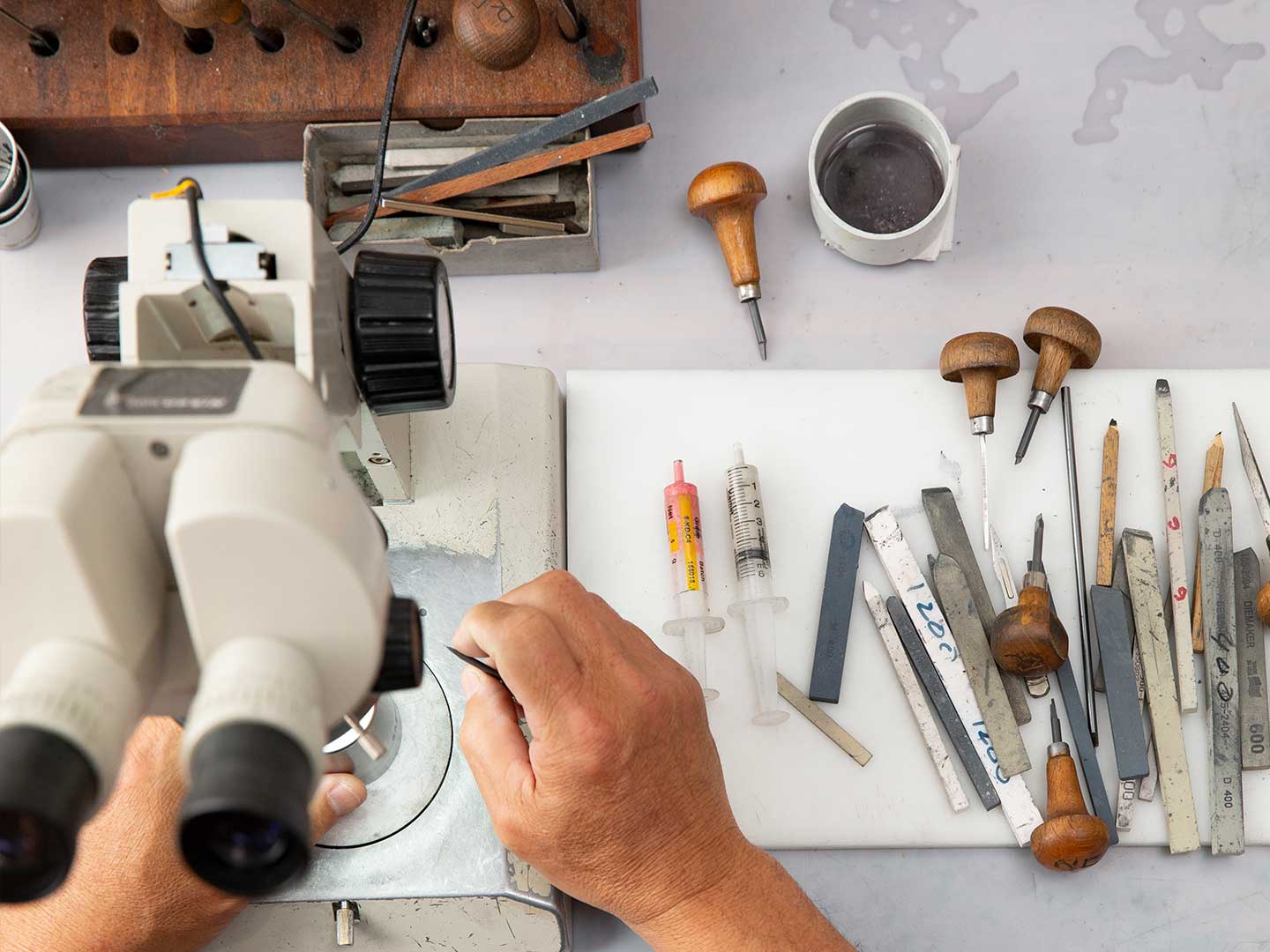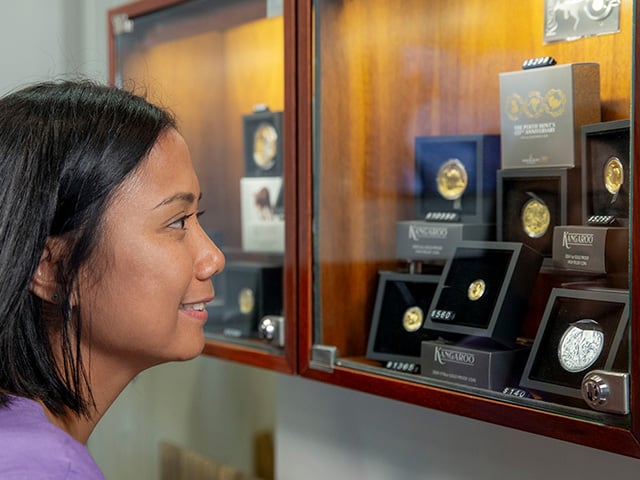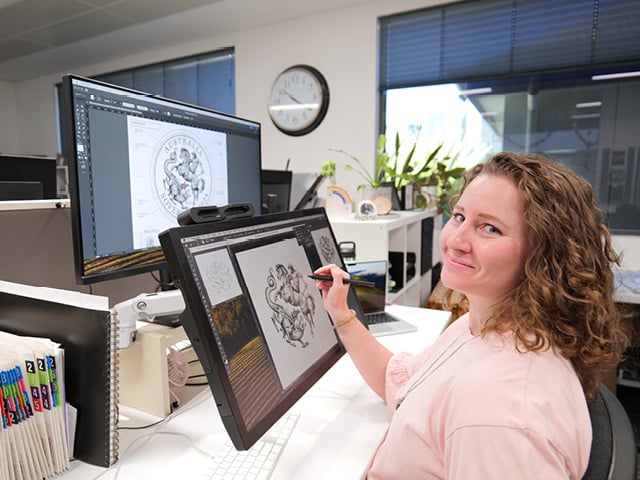Insiders’ guide to precious metal coin production

Coining is the process of converting blank pieces of metal (aka ‘planchets’ or ‘flans’) into coins with motifs represented in three-dimensional ‘relief’.
In this article we explore some of the techniques and equipment The Perth Mint’s Coining department uses to make exquisitely finished precious metal coins.
Of course, before we can make coins, gold and silver is refined to 99.99% purity and then carefully prepared into precision sized and weighted blanks (but that’s a story for another day).
Burnishing
One of the first operations the Coining team undertakes is burnishing the blanks.
Burnishing is carried out inside spinning drums in which a mix of stainless-steel shot and tumbling ‘soap’ is gently rolled against the blank surfaces.
This process is designed to remove any blemishes or scratches, smoothing the blanks in preparation for pressing. Burnishing can take up to two hours to complete, depending on the type of metal and size of the blanks.
The team also employs ‘acid wash’ and ‘ultrasonic wash’ techniques. Very similar from an operational point of view, they remove any contaminants from the blank surfaces with acid or by delivering vibration waves through a liquid. Air drying the burnished blanks completes the process.
Pickling
The Perth Mint is renowned for the accuracy of the weight of each coin it makes. If for any reason a precious metal blank is underweight, it is immediately rejected.
Blanks may, however, end up being slightly overweight. One of the ways we ensure they meet specification is through pickling.
Another acid process, pickling is used to dissolve away excess precious metal from any overweight blanks. Large numbers of blanks can be treated with incredible accuracy in our computer controlled pickling plant.
Pressing
Pressing (minting) is the Coining department’s core activity. To press coins, the team requires finished blanks, two dies, and of course a coin press.
Dies are engraved metal stamps bearing the coin’s ‘heads’ (obverse) and ‘tails’ (reverse) designs. (Requiring precision manufacturing skills, die production is another fascinating story we’ll look at in a future article.)
The press squeezes blanks between the two dies – thereby stamping both sides with their designs. To prevent the metal splaying outwards during the ‘strike’, the blank is bounded by a ‘collar’ featuring serrations that produce the familiar reeded edge around a coin.
The Perth Mint operates a large number of coin presses varying in size and sophistication. They include fully automated presses capable of producing large runs of smaller coins, to extremely powerful presses that can exert tonnes of pressure – required, for example, to make the handful of 10 kilo coins we issue each year.
Operators are on the front line when it comes to quality control. Once they begin pressing the blanks, they pay strict attention to the quality of the impression and inspect for any potential scratches or abnormality that may lead to a coin being rejected.
Ensuring the team’s engineers and technicians stay on their toes, our coin presses are often required 24 hours a day in order to keep up with demand for the Mint’s large range of Australian investor and collector releases.
Special treatments
In recent years, collectable pieces featuring coloured or gilded highlights have become particularly popular. In fact, The Perth Mint can claim some of the credit for this trend, being one of the world’s first mints to pioneer these innovations.
As a result, the Coining team has unprecedented experience in the application of such finishes, using electroplating techniques to enhance selected areas of the design with a layer of 24-carat gold, or using specialised print technology to add vivid colour.
Final inspection
The Coining department’s ultimate responsibilities lie in the final inspection and primary packaging of all the Mint’s coins.
Inspection is an exhaustive process that takes nothing for granted and follows a strict set of guidelines. Even though blanks passed earlier testing, a sample of finished coins is fully re-tested to ensure the specifications – including weight, diameter, and thickness – are accurate.
For optimal quality assurance, a visual examination is required of all coins, and in no case is this more significant than for proof quality collectables. As our elite releases, they feature a shiny, mirror-like table (background) and delicately frosted motifs. Because these coins are presented as flawless, the tiniest imperfection results in rejection.
Having passed every testing procedure, The Perth Mint’s precious metal coins (with a few exceptions) are hand-placed in acrylic capsules providing perfect protection for a lifetime of enjoyment by our collectors.
And as another busy day in the factory comes to a close, our Coining team takes enormous satisfaction from knowing that it is responsible for some of the most desirable coin releases in the world.















